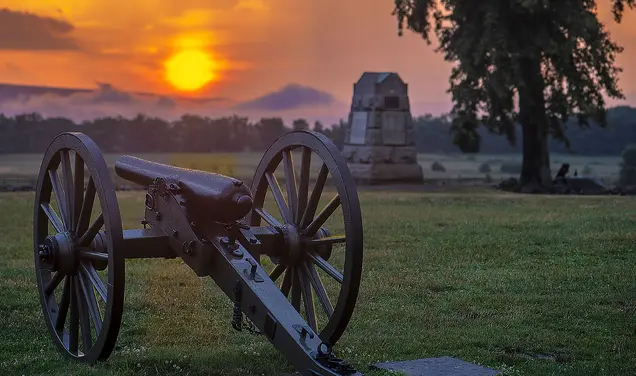Essay: What delight in the 'other' can yield
The minority experience in the early days of coeducation
Aida M. del Valle ’73 lives in Northern California, where she practices estates and trusts law. She is presently in a writing dyad with her Princeton pal, Nadia Benabid ’77, both of whom are crafting the stories of their eclectic histories.
In the wake of Justice Sotomayor’s publication of her memoir and President Obama’s second inauguration (not to mention my impending 40th reunion), I felt the urge to give yet another view of the minority experience during those first years of coeducation and multiculturalism at Princeton. I dredged up a many-year-old essay. I called one of my dearest Princeton friends, a choreographer, and asked, “What was up with us? How come we didn’t fit squarely into any group? Was it that we were the ‘artistic’ types?”
“No, universalists,” he replied with a big laugh, and it got me thinking. I knew ours was a somewhat quirky story, not the polar opposite of identity politics — the blind assimilationist tale — but something in another category that I needed to probe.
As I reminisced about Princeton, I was taken by the depth of the diversity I experienced there. Initially this seemed ludicrous, given that I was there during the earliest influx of minorities of all kinds — and not in large enough numbers to make much of an impact on University life, just a dribble of difference. Yet my observations of the ensuing years at Princeton convinced me that my experiences in creative collaboration across class, cultural, and gender lines there hold resonances that we have yet to strike again.
I arrived there as a transfer student, the only Puerto Rican woman in the Class of 1973, with no intention or desire to blend quietly into the University’s overwhelmingly Anglo-Saxon, upper- and upper-middle-class milieu. Reared in the rich atmosphere of Manhattan’s Washington Heights, with its conglomeration of post-war Holocaust survivors, artists, Columbia students, upwardly mobile Latinos, as well as African-Americans, I had little patience for monocultural norms that claimed superiority over all others, no matter how highbrow. I entered Princeton as a true New Yorker, who felt that the University was as lucky to have me as I was to have been admitted to its great halls.
My pre-Princeton education prepared me to cross barriers with some fluency. In my private Catholic grade school, my classmates came from Irish, Italian, Latino, Western and Eastern European, and African-American homes, with a critical mass of nearly every group across this broad cultural spectrum. Top students were as likely to be from the Dominican Republic as from the Ukraine, and identity politics would have been redundant in an atmosphere where difference was the norm, not the exception. My working-class mom, ever curious and never provincial, would take me to Katz’s in the Lower East Side for knishes, to Little Italy in search of homemade lasagna noodles, and window-shopping down Fifth Avenue. In our music collection was Chopin, mambo, and records by the legendary Egyptian and Lebanese singers Om Kalthoum and Fairouz.
Then, too, like so many Puerto Rican children, I regularly was sent off to the island to visit my mother’s poor relatives in the countryside and my father’s more affluent family in the capital. One week I’d be bathing in a wooden tub in the kitchen of my maternal aunt’s humble country home and using an outhouse; the next I’d be browsing through the bookshelves of my paternal aunt’s spacious penthouse apartment in San Juan.
When I landed in a militaristic, all-girls’ Catholic boarding school in eighth grade (my single mom held down two jobs to pay for this), I realized just how significant all of that exposure had been. There, for the first time, I witnessed overwhelmingly European-American homogeneity: a parade of ubiquitous blondes, tasseled loafers, knee-highs, and Peter Pan collars. There, I experienced my first hefty dose of racism spouting from the mouth of our old-guard, nun-principal. Having a good brain saved me, as being at the top of my class throughout high school gave me special standing despite the glaring anomaly of my light-brown skin.
At first, my friends were the hyperintellectual “outsiders” who questioned the values of this physically and psychically gated nunnery. But in time, despite a bout with a more exclusivist identification with things Latin and African-American, I learned to make my peace with those in the “majority” – I had to. As a boarder I was a captive, and I realized that a failure to dig deeper beneath the apparent uniformity I perceived in everyone would leave me a very lonely person. The more radical Catholic ethos of the times, with its admonition to “reach out,” engulfed us all. In response, some of us managed to come together beyond the chasm of polarized stances, and I made many wonderful friends, the best of whom was one of those blondes with tasseled loafers and knee-highs.
At Princeton, I gravitated toward the most open-minded people that I could find. My diverse background had prepped me to float free, and though I identified with my fellow Latinos, my hunger was for as mixed a community as I had grown up with. (Motown proved to be a great equalizer.) By junior year, my close circle included a Collegiate School-educated, third-generation Princetonian; the most dynamic woman in student government; a working-class Cuban dancer, who had been the president of an all-black high school; a Moroccan actress, who was the daughter of a Jewish mother and an Arab father with two wives and a large cadre of male sons; a gay Chinese professor; and a successful Japanese visual artist.
Most of us were artists; all of us were intent on discovering some common ground beneath the chaos of “us and them.” The butchery in Vietnam fueled a sense of urgency about life now because death was on our heels and a bit too soon, our poetic lives argued. We protested politically and, when exhausted, turned to creating a life in contrast to those fiercely protected class, cultural, and gender lines that made life small and uninteresting.
Princeton, like many other elite universities, was coming apart at the seams: The civil-rights movement and feminism had pried open the staid, smug character of “the northernmost school for Southern gents,” and a flood of new life rushed in. This spirit of change scrambled the demographics of administration, faculty, and students alike, and for those who wanted to take advantage of such an opportunity, it created a fertile ground for cultural experimentation.
Then, as now, many were polarized into their interest groups: the eating clubs, the minorities, the women, the hippies, the jocks. Only some of us reached across that divide, obviously not because of any moral superiority, but because each in his or her prior experience (through opportunity or sheer necessity) had been forced to stretch beyond the limits of the known many times over. Each of us had a little of the Barack Obama story in our blood, which perhaps gave rise to a burning need to reconcile differences. My friends, faculty and students alike, wrote, danced, acted, painted, sang, and cooked together across languages, cultures, gender roles, and socioeconomic strata. I learned to be a proud “mutt” in this brilliant and heart-full community, and though we all have gone our separate ways, the unbreakable bonds we forged remain strong, stunning testimonials to what delight in the “other” can yield. Thank you, Princeton.












No responses yet